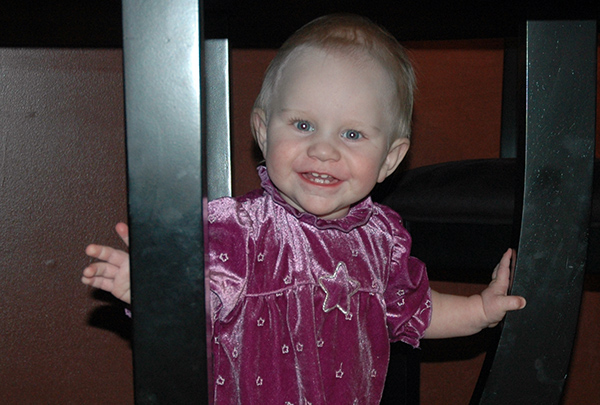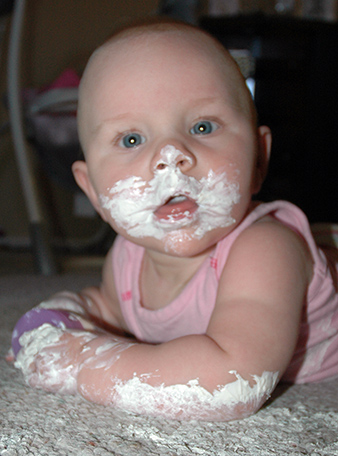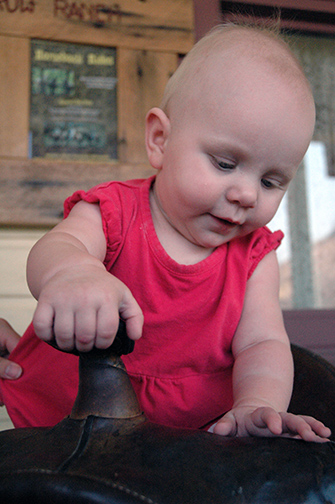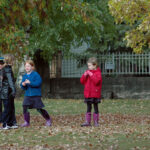Home »

Social, emotional development in the early years
By Charlene Stropky
When we think of developmental milestones, skills such as crawling, walking, talking, using the bathroom and learning to count tend to spring to mind.
Recent research highlights the importance of less obvious milestones – those in the social/emotional developmental domain. It is a solid foundation in this area of development that provides a child with the confidence, curiosity and freedom to explore and learn about their world. We notice how children’s behaviours evolve over time, but we may not realize that these behaviours mark important developmental milestones:
 – At birth, the newborn displays at least three emotions – anger, distress, and pleasure. By six months fear, shyness, and disgust emerge. By one year, babies are also demonstrating surprise.
– At birth, the newborn displays at least three emotions – anger, distress, and pleasure. By six months fear, shyness, and disgust emerge. By one year, babies are also demonstrating surprise.
– An infant begins to be able to calm him/herself, perhaps by sucking. An older baby can sometimes be calmed by seeing their caregiver and hearing their voice.
– Fear of strangers and a preference for familiar caregivers is usually emerging at seven months. This is also when attachment to primary caregivers is established.
– “No” and tantrums signal the desire for independence in a toddler. Toddlers are generally able to go along with requests about 45% of the time.
– The emotions shown by toddlers include jealousy, pride, shame and embarrassment.
– Toddlers are using social referencing – looking at parent’s or others’ facial expression – to get cues as to how they should behave.
– Between two and three years, pretend play is increasing as a means to explore and talk about negative feelings.
– Between three and four years, a child can use self-talk to help remember rules and expectations. She is now more likely to share consistently. Cooperative play is maintained for longer periods and children are becoming more skilled in working out conflicts.
– From three to four years, ‘Theory of Mind’ becomes established. Children recognize that the thoughts, perceptions and feelings of others are different from their own. They are better able to understand these.
– Between four and six years children identify with and imitate the moral examples of their caregivers and internalize rules of family, school and community.
 – This is also when children begin to use internal control (self talk, distraction, focus, perspective taking) to regulate strong emotions. By six years of age, children have the capacity to be concerned for the future welfare of others.
As with all other areas of development, it is important to keep our expectations of children in line with their developmental capability.
– This is also when children begin to use internal control (self talk, distraction, focus, perspective taking) to regulate strong emotions. By six years of age, children have the capacity to be concerned for the future welfare of others.
As with all other areas of development, it is important to keep our expectations of children in line with their developmental capability.
For example, asking a two-year-old to think about how another child feels is likely beyond his/her ability, since ‘Theory of Mind’ is not yet established. It is far more effective to label the feelings and talk about what may have been the cause. What else can be done to support healthy social and emotional development throughout the early years?
– Build a healthy relationship with your baby and toddler by spending time face-to-face, observing him/her to learn what they want or need, getting down on the floor and playing with them (you are the best toy he/she has!) and noticing and responding quickly to cues that signal distress. Research shows that babies whose cries are responded to promptly cry less after the first year than babies who have been allowed to “cry it out.” Babies can begin to tolerate short times of mild distress after the newborn period, but they need to know they can always rely on an adult to soothe them and help them to manage strong feelings.
– Provide a warm and responsive environment where limits are clear and consistent. This gives children a sense of security. Structure your environment and schedule with your child’s temperament in mind. Does he/she need predictability and calm? Does he/she need lots of activity? Is he/she easily distracted? Does he/she adapt easily to new situations? The better the fit between your expectations, your child’s abilities, your child’s temperament, and his/her environment, the happier everyone will be!
– Accept your child’s emotions. Teach appropriate strategies for dealing with strong feelings.
– Notice and comment on behaviour that is caring, helpful, kind, considerate, cooperative and otherwise positive.
– Help your child to see the effect his/her behaviour has on others – positive and negative.
– Ensure that the guidance and discipline you provide your child includes teaching negotiation and problem solving, and making amends.
– Teach social skills with the same attention we pay to physical, cognitive and language skills. The relationship between parent and child sets the stage for a child’s future relationships. At the heart of this relationship is trust. You can gain this trust by being a steady source of comfort so your child feels safe and secure and ready to learn about the world!
- Charlene Stropky is the Infant Development Consultant with the East Kootenay Infant Development Program (250)426-2543 [email protected]. This article submitted by the Cranbrook Early Years Committee. The committee meets the first Tuesday of each month from 1 to 3 p.m. at Cranbrook Family Connections (209A-16th Ave N, beside Memorial Arena). New members are always welcome. For more information about the committee, contact Shannon at [email protected]







